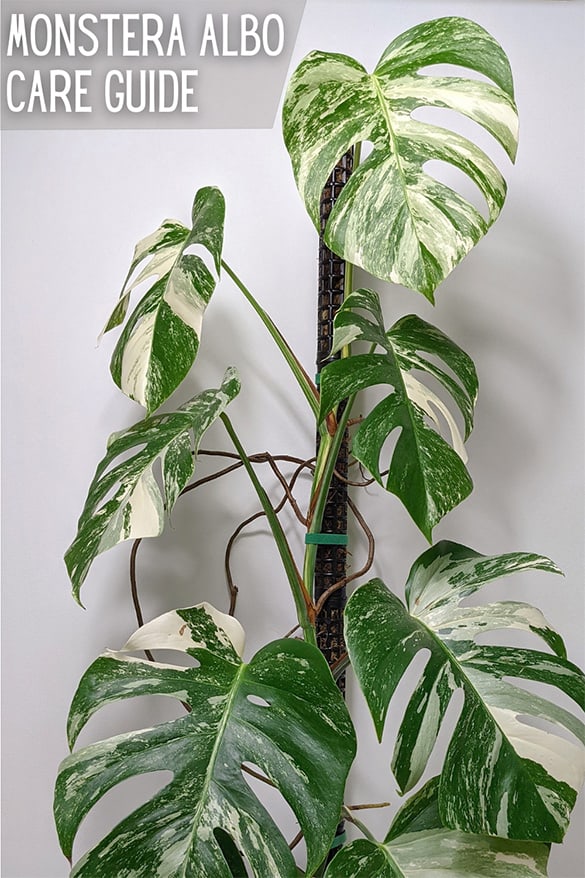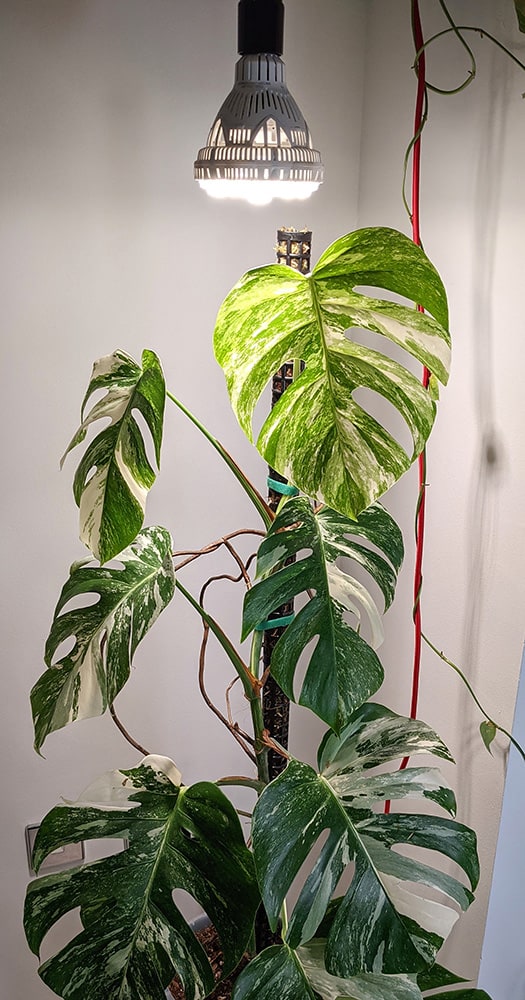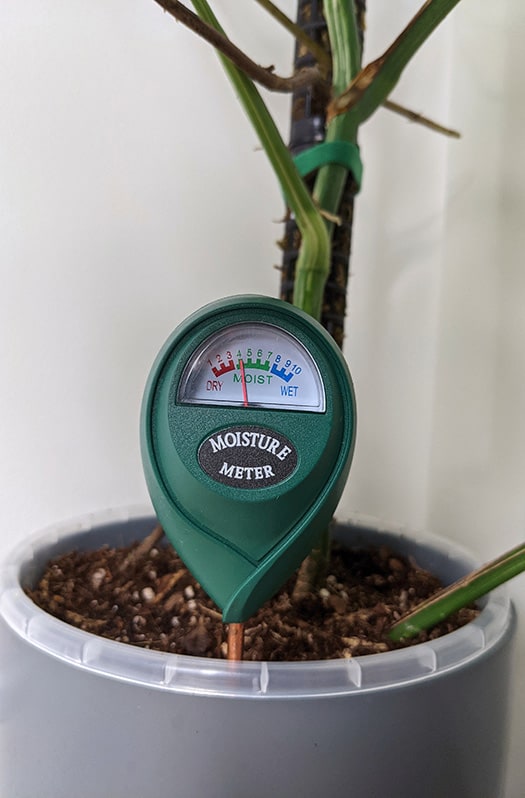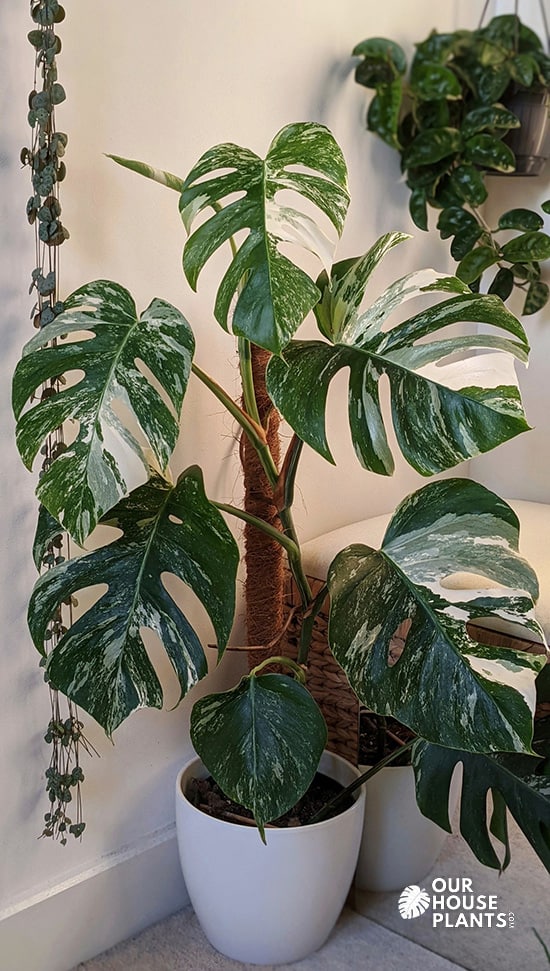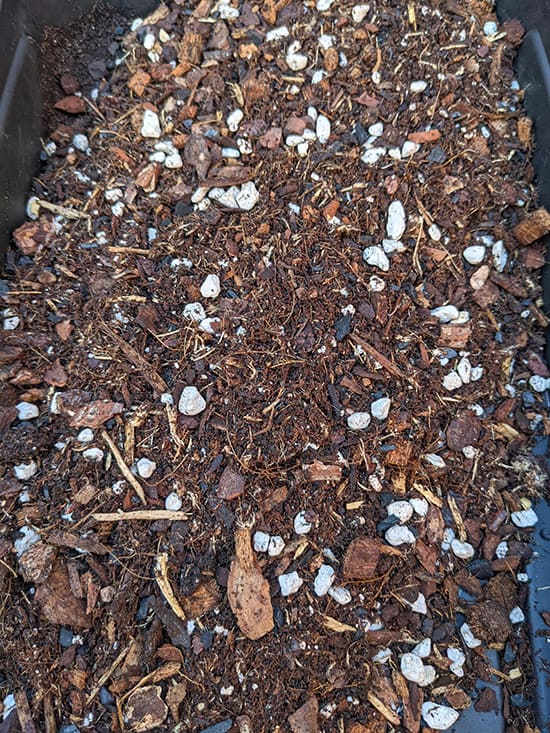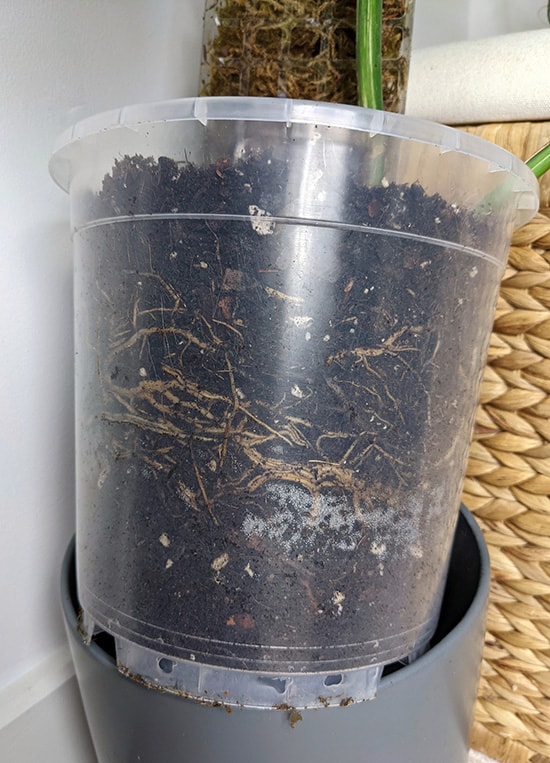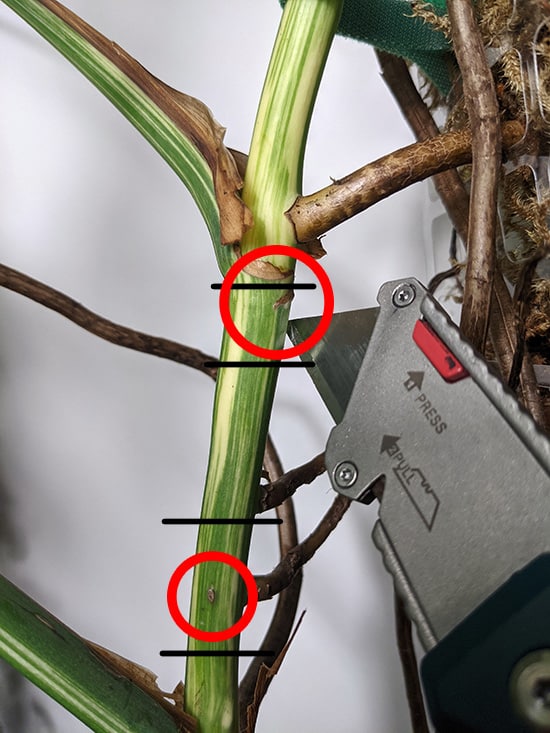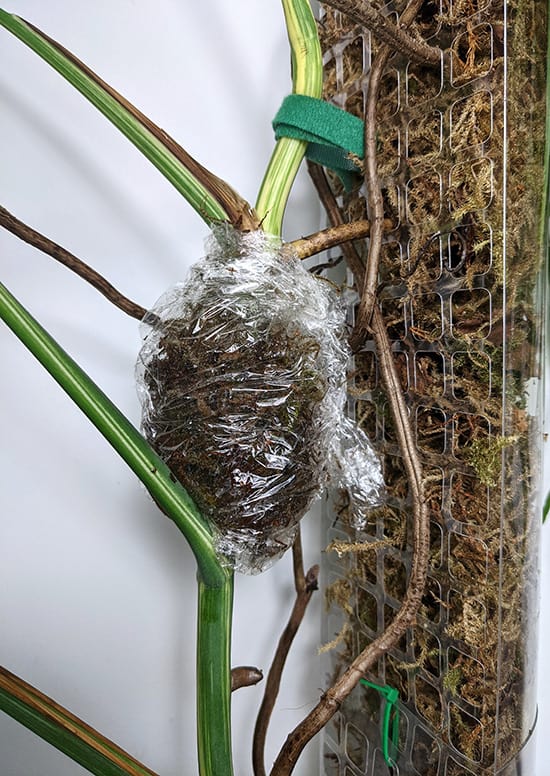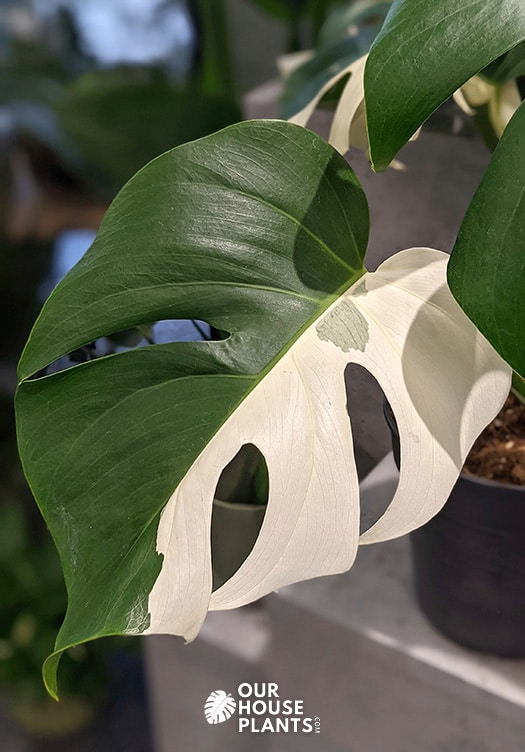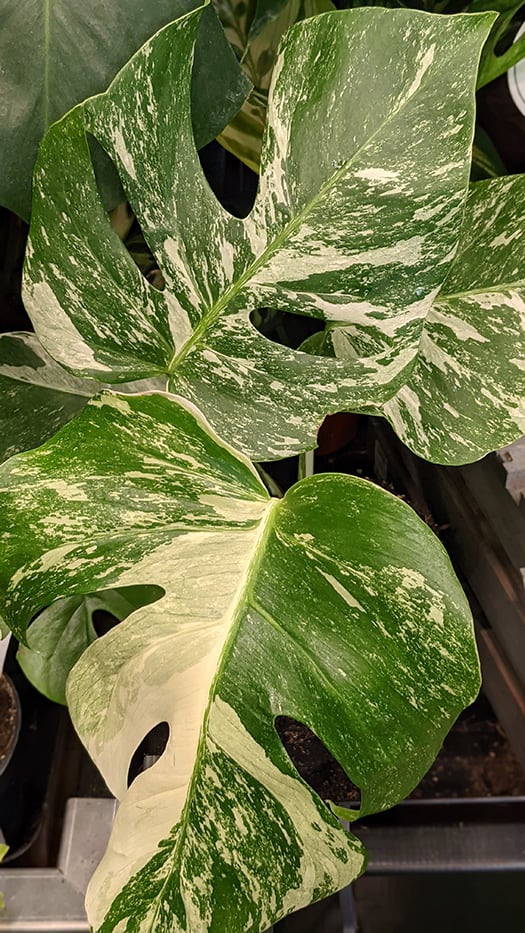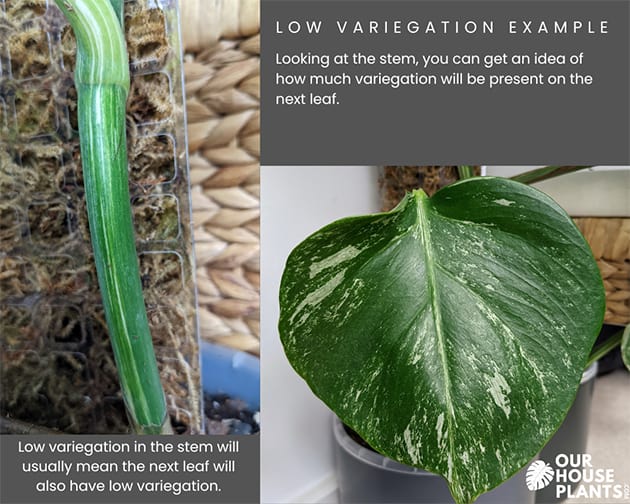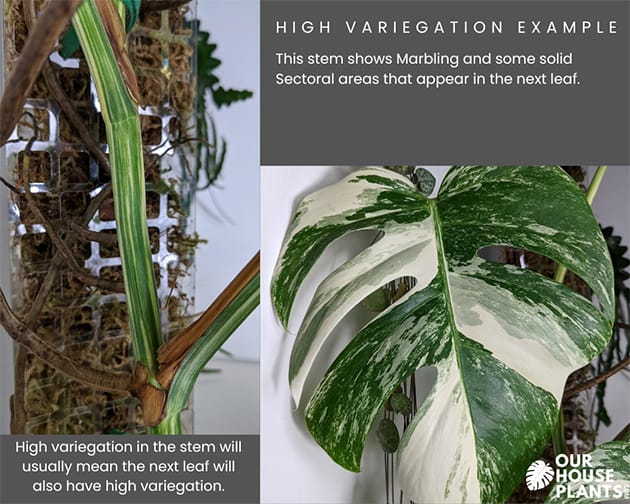The Monstera Deliciosa Albo, Monstera Albo, or Monstera Variegata (they're all the same plant) is a rare cultivar known for its striking variegated leaves.
This tropical plant can be expensive so if you've stumbled across this article you're probably looking to learn how to care for it properly.
The good news for you is that its care needs are reasonably straightforward and most problems can be overcome. I'm sharing everything I know, so by the end of this article, you should be confident in how to care for it and learned a thing or two about this houseplant along the way.
The Monstera Albo is highly sought-after by plant enthusiasts, it has average care needs and isn't too difficult to grow but its limited availability contributes to its status as a prized collector's item Translation = It's usually expensive.
The Monstera Albo is a climbing plant that adds elegance to indoor spaces because of the large leaves they produce and the variegation they display. The distinctive fenestrations (natural holes and splits) in the leaves add to their unusual appearance.
Monstera Albo vs. Monstera Thai Constellation
The Albo and Thai are two distinct types of variegated Monstera; they grow differently and visually also look different to one another. I have a separate article to guide you if you're unsure how these plants differ. The article you're currently reading, only covers the Albo. Here is the care guide for the Thai Constellation.
The leaves will have white or light creamy white markings that contrast with the familiar deep green found on the traditional Monstera Deliciosa. I'll cover off more on the variegation later.
Most Albo plants are Monstera Borsigiana which is a variety of Monstera deliciosa (a.k.a the Swiss Cheese Plant). The Borsigiana tends to have a slightly smaller form and the leaves don't get as big. However with good care and maturity, it will still be a massive plant.
A genetic mutation causes plants to produce white variegation. Although it's still Monstera Borsigiana at its core because the mutation causes a change in its appearance, it's often just called "Albo" or "Variegated Monstera".

Hi, I'm Tom!
If you're like me and enjoy the challenge of growing houseplants and getting them to thrive, then Ourhouseplants can help. This website shares my knowledge and years of growing plants and provides (hopefully) helpful advice on properly caring for your indoor plant friends.
Monstera Albo will thrive in the brightest spot in your home that doesn't get direct sunlight. It can however deal with a few hours of filtered sunlight or dappled shade, so near a east or west facing window will work.
Avoid exposing it to direct sunlight for extended periods, as this can lead to leaf burn and damage the variegation.
If the plant receives too little light, its growth may slow, and the variegation can sometimes become less prominent in future leaves that are produced. The biggest draw of these plants is the variegation so it's worth getting the light needs right.
If you can, place the plant near a window with filtered light or provide artificial light sources, such as fluorescent or grow lights, if needed.
If your home does not get a huge amount of natural light then using a grow light like this can help boost the growth and health of your Albo Monstera.
Using a grow light is not essential. I only use one for mine over the winter months as the room it's normally in, only has small windows and it gets pretty gloomy over the darkest months of the year.
If you're curious about the cost, you can use my running cost calculator to work out the approximate electricity expense of using a grow light. If you're not ready to consider grow lights at this stage then in some circumstances you might be able to use a regular LED light to help.
Fortunately, the Monstera Albo has watering needs typical of most houseplants so it's easy enough to get right. Unfortunately, these are considered special plants and it's very normal for new plant parents to give them extra attention and fussing that they don't need or want.
Think of the plant as a teenager instead of a baby. It's reasonably independent, still needs help from time to time, but doesn't want to be drenched in attention constantly.
The number one reason people run into problems with their Albo's is down to overwatering. You need to water them well, and then leave them well alone.
Albo's are expensive plants and for the sake of $10, getting a moisture meter to help avoid root rot is almost a no-brainer.
Allow the top couple of inches (5 cm) of the soil to dry out before watering your plant again. You can stick your finger into the soil, and if it feels dry, it's time to water. Simple right?
If the moist soil finger test isn't for you and you know already you're going to be an anxious plant parent or you've had root rot issues with your houseplants, then buy a moisture meter.
Even cheap ones will give you a guide to help you understand your plant's watering requirements better.
Where to buy a moisture meter?
I got mine from Amazon about three years ago. It's shown in the photo above and still works fine today, so I'm happy to recommend it. I'll link to it here. This is an affiliate link and we will earn a small commission if you purchase it from here.
It's worth remembering that the drying out period will be shorter during the summer, warmer months than in the winter cooler months. So try not to follow a strict fixed watering routine all year round.
They can cope with underwatering much easier than overwatering. If you're in doubt, then wait a few more days before watering it again.
Monstera Albo, like many tropical plants, will appreciate high humidity levels. They can deal with lower levels for periods of time, but brown markings on the white variegated parts of the leaves are more likely as are brown tips on the leaves. If you're prone to them, Spider Mites can be a problem too.
50% and above all year round should be the aim. Protect the plant from dry indoor air, especially during the winter months when heating systems can reduce humidity.
Grouping plants together can create a microclimate with higher humidity levels, benefiting all plants involved.
If you have a problem with low humidity though, then getting a humidifier will be the most effective option. Skip pebble trays and misting as they don't work well enough.
Feeding your Albo will eventually be necessary for supporting its growth and ensuring the continuous development of new vibrant foliage. Once every 6 weeks using a balanced liquid fertilizer is roughly how often I feed mine.
You can however feed more frequently if you prefer, just don't overdo it. If you over-fertilize your Monstera Albo, it can lead to salt accumulation in the soil and fertilizer burn. This will often result in a brown margin on the variegated leaf edges, spoiling the foliage.
Using a balanced, water-soluble fertilizer during the periods that your Monstera plant is growing will help it maintain and produce new foliage.
These plants will thrive in warm temperatures. Avoid cold extremes and anything below 50°F (10°C).
For actual growth to occur you will need a daytime temperature in excess of 65°F (18°C). If you're after faster growth, warmer than this would be needed.
You can watch me over on YouTube talking about the last three years of growing my Monstera Albo.
As a rough guide, very young plants should be repotted every year. This will help refresh the potting soil and provide room for growth.
Older plants will need less frequent repotting and you should only look to do it when the plant is clearly root bound. Shortly after this happens, in most cases, the plant's growth will slow or even fully stop.
Yellowing leaves once in a while is normal, but plants that are pot bound may have more yellowing that "normal".
You can repot your Monstera Albo at anytime of the year, even in Winter, although the general wisdom is to do it when it's warmer and your plant's in active growth.
This is perfectly good advice and I think inexperienced plant parents should play it safe and follow this rule. This goes for anyone nervous about making a mistake at a less forgiving point of the year.
A container a little bigger than the previous one is usually the way to go. Sometimes owners will simply want to remove and replace the potting mix before putting it back into the same container. This is fine, providing there is still room for the roots to expand into.
The right potting soil is crucial for the health and well-being of your Monstera Albo. The good news is that most Monstera's, including the Albo can be grown in a wide range of potting mixes.
The bad news is that some can carry additional risks namely holding too much water and triggering overwatering issues.
Do you have to change the default potting mix?
In most cases you don't have to replace the mix that your plant came in if you're very careful. Owners sometimes like to do this because overwatering is a big issue for these houseplants. Changing up a mix that acts like a sponge, holding onto lots of water, for one that doesn't, gives you that extra safety net if you make mistakes.
Most shop brought plants will be growing in peat moss or a houseplant blend that has high water retention. This means its very easy to accidentally overdo it and create soggy or wet conditions around the roots.
This can encourage and support bacteria to grow, massively increasing the chances of root rot taking hold.
This is one of the main reasons you'll see people taking them out of this potting medium and using their own mixes, like the one shown below.
A potting mix containing bark chips, coco coir, worm castings and perlite, suitable for Aroids like the Monstera Albo
The mix shown in the photo is something I recommend if you can buy it or make it yourself. It's a well-draining mix containing perlite, orchid bark and coconut coir chips.
These components are large and don't absorb much water, this allows air to circulate around the roots and provides aeration. It also helps keep the potting mix "open" and stops large volumes of water being held in the container.
Of course the potting mix does actually need to absorb and hold at least a little water. So this mix also contains some organic matter with coconut coir fiber and worm castings which will hold onto water.
No matter what anyone tells you, these plants do not require a clear orchid type container.
Yes it's quite a rare and expensive plant, but ultimately it's still just a houseplant like any other and clear planters are not an essential requirement to grow them well.
The advantage of a clear pot like this is that you can check on the health of the roots without unpotting it all. This photo shows the roots have plenty of space to grow into and the potting medium is perfectly moist and doesn't need watering yet.
Owners like using these see through containers because they provide a window into how the roots of your plant are doing. At a glance you can see how healthy the roots are, and after a little experience you'll be able to see how moist the potting mix is.
This can be extra helpful if you're not on board with my idea to get a moisture meter.
So using a clear pot can help you to grow your Monstera Albo better because it provides more information about the status of your plant. But again it's not essential and you don't need one to be able to grow these plants. If you want to learn more about clear pots then I have a seperate article covering it.
Like all Monstera plants you can propagate your Albo if you want. They're not the quickest growing houseplants so propagation is often slower than many owners would hope. But slow and steady and all that.
There are two main ways to propagate these plants. Stem cuttings with water propagation (or planting directly into a potting medium). The second way is air layering.
Cutting Preparation: Take a 5-8 inch cutting with a sharp blade. You will want at least one leaf, a node, and an aerial root.
Remove Excess Leaves (optional): Trim any excess leaves, leaving a few inches of stem below the node. This minimizes stress on the cutting.
Additional Tips.
-
Propagation is often more successful during the plant's active growing season in spring and summer when there is more light.
- Don't underestimate the power of heat. Warm temperatures will almost always speed up the growth of
cuttings.
Let the Cut End Callus (optional): Allow the cut end to air dry for a few hours or overnight to form a callus. This helps prevent rot when planting.
If Using a Potting Medium: Use a well-draining mix (see the potting mix section above for ideas). Wet the mix slightly.
Plant the Cutting: Insert the cutting into the soil, ensuring the node and aerial root are covered. Gently press the soil around the cutting to provide support.
If you're attempting this by water propagation then the node and aerial root go into the water. The leaf needs to be above the water level and no part of it should touch the water.
Place in Indirect Light: Put the cutting in a location with bright indirect light. Avoid direct sunlight, as this can stress the cutting.
Monitor and Water Sparingly: Keep the soil lightly moist but not soggy. Overwatering can lead to root rot. After a month, check for root development by gently tugging on the cutting. Once roots are established, you can transplant it into a larger pot.
The Monstera Albo is expensive and removing any part of the plant for propagation is risky because if it doesn't "take" you've lost something that may have taken your plant months to grow initially.
People often like the Air Layering method because it has a higher chance of working. You also don't need to cut anything off the plant until after the roots have started to form. Therefore the chances of the cutting creating an independent plant are significantly increased.
You'll need a sharp knife (for making a nick on the stem). Sphagnum moss (this helps create an environment for root development). Plastic wrap or plastic bag (to enclose the moss and maintain humidity). Twine or plant ties (to secure the plastic wrap and sphagnum moss in place).
For many, air layering is the best way to propagate a Monstera Albo plant. Find an inactive node, usually they're located near or opposite the aerial roots. Then make a small cut near one to encourage new growth.
Choose a healthy and mature stem for air layering. The chosen section should have at least one inactive node (the point where leaves and roots emerge). In the photo above you can see inactive nodes (circled in red).
Then you simply want to inflict damage by cutting a little way into the stem by a few mm (you don't need to go too deep) near the node. Either above or below is fine, what's important here is that it happens near a node.
The photo above also shows four black lines, indicating suitable areas where you can cause damage by making the shallow cut. You only need to make ONE cut.
A variegated Monstera such as this monstera albo variegata can be an expensive rare plant. So this method of propagation reduces the risk of you losing parts of it, if the attempt doesn't work.
After you've done this, grab a handful of moist Sphagnum moss and push it tightly up against the cut you've just made. You then secure everything in place with plastic wrap or a plastic bag. It shouldn't be "air tight" so don't close everything up too much, keep things moist and wait.
The plant will sense damage has occurred and will also feel that it has something that roots can form into and this is how air layering works.
If it doesn't work then the cut will simply heal up and you can try again elsewhere. If it does work then new soil based roots will form and after a few months (yes it can take months) they'll be large enough to support the plant.
You can remove the stem just under where the roots are, and then plant it up into its own potting mix. The parent plant should then produce a replacement stem in due course.
Even if you provide perfect growing conditions these are start - stop sort of plants. You will notice the plant having huge bursts of speedy growth, pushing out a leaf from seemingly nothing into something beautiful within a few weeks. Then it all goes quiet, potentially for a month or longer.
In reality the plant is creating and storing energy and getting ready for the next leaf. Assume your plant is always working hard, it's just that you might not always be able to see it visually like you can with other plants.
However some things will slow down the "work" it's trying to do and show up as "slow growth".
This is a climbing plant and it can get tall over a good number of years. Generally the final height is determined by your growing environment, namely your ceiling.
Although Monstera Albo is a vining plant that will climb, you shouldn't ignore the leaves as they add considerable width / spread to the plant's footprint. They can reach impressive sizes, with a span ranging from 2 to 3 feet or even more.
Your Monstera deliciosa Albo variegata could produce a flower or two at any point during the year, but it's rare in indoor settings. They're also unremarkable and not something most owners will grow these houseplants for.
The Albo contains compounds that can be mildly toxic to pets if ingested. The plant contains insoluble calcium oxalate crystals, which can cause irritation and discomfort if chewed or eaten by cats, dogs, or other pets.
The variegation on these plants has an unstable nature, which means each leaf can look different from the one before. It can also completely disappear which is probably the biggest worry with owning these plants. I'll give you some solutions to this later.
More striking perhaps is that two plants side by side can have very different markings making them seem like different plants, but they're all Monstera Albo's.
In general there are three main types of variegation you're going to come across on these plants.
These are "Half Moon", "Marbled" and "Sectoral".
The Fourth Type
A fourth type exists called "Sport variegation". This is where there is a minimal amount of variegation present often less than 5% on the plant. They're much less desired and can be hard to find because the markings are so poor and random, but they do still exist.
In practice one is not better than another, and what it really comes down to is which you like better.
Plants will usually keep developing a similar type of variegation from leaf to leaf, so pick plants that already have an appearance that you like.
This isn't always true though and I'll explain more later.
Half Moon
Monstera leaf with half moon variegation
With half moon variegation, roughly half of the leaf will be completely variegated and the second half will be completely green. This creates a very striking and sharp contrast.
Marbled and Sectoral
Two Monstera leaves with marbled variegation on the upper leaf and sectoral variegation on the lower
You can see an example of Marbled variegation in the first leaf in the photo above. It has small sections of white mixed fairly evenly with small sections of green throughout the entire leaf.
The second leaf at the bottom is an example of Sectoral variegation. Large sections of predominately white areas with large sections of green.
Did you know?
The stems will help you predict what the next leaf will look like. I'll cover this next.
It's most common for plants to have a mix of Marbled and Sectoral variegation. You can also get completely white leaves, but in general, this is more uncommon, as is finding a plant where all leaves display half moon variegation.
I've already mentioned that the variegation is unstable and that each leaf can be very different from the next.
However did you know that you can predict, with reasonable accuracy, what the next leaf is going to look like by looking at the stem below below it?
Although there are less markings present, the plant is still classed as a Monstera borsigiana Albo. It's possible later leaves could have more markings, so keep going and keep your fingers crossed.
The above example shows what typically happens when the stem has more green showing than white variegation. When contrasting the two, there is significantly more green and this is reflected within the leaf itself.
The stem climbing this moss pole has more markings on it. This is then reflected in the leaf that the stem is attached to.
The above diagram shows an example of high variegation. You can see there is considerably more creamy stripes and solid sections in the stem than in the previous example. As a result, the leaf above this is much more variegated. It has marbling and also some sold sectoral sections on display.
If the stem had very large sections of white or complete sections with no green, you could end up with a half moon or even a completely white leaf.
Can variegation be controlled?
You can't directly control how each new leaf will display variegation. You can slightly influence it by providing good care, in particular good light levels. But ultimately the Monstera Variegata has unstable variegation and this means some unpredictability has to be expected.
It might sound cool, but completely white leaves or very little to no variegation can be bad news. White leaves cannot provide energy for the plant by photosynthesis because they lack chlorophyll. However, the leaf's existence will still strain the plant's resources.
Equally very little variegation is bad because it could indicate it's disappearing from the plant, this would mean the next set of leaves could be completely green.
When this happens it's fairly common for the owner to remove the affected leaf and affected stem. The plant will then produce a replacement shoot near where you cut it and there is a chance the variegation on the new growth will be more suitable.
In my care guides at this point I'll be listing and running through the most common problems and issues people come across. But this article is already pretty extensive so I've written a separate guide for this.
Monstera Albo leaf with browning on the edges. One of ten common problems.
I hope it helps resolves any issues you're having with your Monstera Albo. But if I've missed something, comment below or on the problem article itself.
